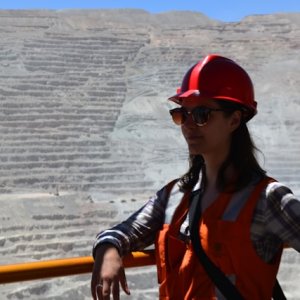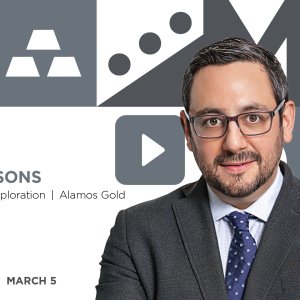Embracing Our Differences, Changing the Mining World

STORY INLINE POST
Q: What lasting changes will COVID-19 bring to the mining industry?
A: The pandemic is a watershed moment for all of Mexico’s industrial sectors. It brought to the forefront the fact that the mining industry is well-positioned to face emergencies. The industry was swift to implement safety and health protocols that it had already developed in collaboration with the authorities. These protocols became an example for other industries. Companies and the Undersecretariat of Mining developed measures to keep workers and communities safe, following national and global standards. Many of these measures and protocols are here to stay.
At the pandemic’s onset, Camimex undertook a mapping of vulnerable populations in the 696 localities where there are mining activities, located within 212 municipalities around Mexico. We identified a population of around 160,000 senior citizens and focused our relief efforts on them. During the pandemic, miners behaved as good neighbors, providing support and health services for the population. We also provided economic support when the mines were closed. We collaborated with state and local governments: we often are considered their extension to deliver basic services to the population. The protocols and knowledge gained during the pandemic will enhance our already robust social engagement practices.
Q: How can Mexico climb up the metals value chain and move beyond the production of raw materials?
A: A transversal industrial public policy is of the essence. Its goal should be to link the mining industry with other industrial sectors. However, if Mexico does not incentivize mining first, then it will be difficult to use the industry as a leverage for other sectors. Therefore, we must first develop an integral policy that strengthens mining. Mexico’s mining industry can become an engine of national growth.
We have proposed a roundtable with President López Obrador to further this integral mining policy. The goal is to facilitate a dialogue that includes all actors: environmental, health, community relations and security authorities, among others. The conversation emphasizes the current issues the mining sector is facing. The industry today is socially and environmentally-minded. Miners are proactive in mitigating all the impacts from our activities. We comply with all laws and follow international standards, like the International Cyanide Management Code or ILO 169.
Among the topics that we will discuss at the roundtable is the industry’s fiscal reality. Exploration has dropped more than 50 percent in the last decade. If there is no exploration, the project pipeline will run out — sooner rather than later. The possibility of creating fiscal stability pacts is also on the agenda. Furthermore, improving mining’s image among the public at large is a priority. Miners are great at mining, but no so great at communicating — we have to change that.
Q: How much is the Mexican mining industry expected to grow in 2020?
A: While there are difficulties in the global economy, current metal prices are conducive to growth. It is important to consider, nevertheless, that prices can suddenly change due to volatility. It is more important to base one’s optimism about the industry on megatrends that transcend current metal prices. For example, mining is key in the transition to the low-carbon economy. Also, the mining sector is a government ally for tackling the pandemic and restarting the economy.
Investments in the short term, however, are expected to be conservative. In 2019, US$4.65 billion was invested: 4 percent less than expected but still a quite strong figure. For 2020, Camimex expects an investment of US$4.75 billion, a moderate increase from 2019.
Q: What is Camimex’s position on the creation of a specific law to regulate indigenous and Afro-Mexican consultation?
A: Camimex welcomes the initiative to create a specific law. It should be a law that bolsters the rights of all Mexicans, including mining companies, communities and indigenous and Afro-Mexican populations. A key aspect that legislators have to keep in mind is to clearly define when to carry out the consultation. It has to be at a point when the project’s size and impact is already defined. The granting of a mining concession does not mean that a mine suddenly materializes and starts producing minerals. Exploration comes first: it takes many years and has minimal impact. The point where the project finally takes shape and a construction decision is reached takes a long time. Therefore, carrying out a consultation before granting a concession would not make much sense. A good moment would be when the project developers are ready to ask for the environmental impact permits (MIA). Lawmakers and industry representatives should work together to develop the consultation law in a manner that is germane to the industry’s reality.
Q: What is the ideal cooperation agenda between companies and authorities to enhance security for mining operations and suppliers?
A: It is important to recognize that security is ultimately the responsibility of the state. But it is also crucial to realize that achieving optimal security levels requires the cooperation of corporate and private citizens. We have to collaborate with the authorities and be transparent when communicating with them. We must always report illegal activity and never collaborate in any way with criminal groups. Camimex has been in collaboration with the Undersecretary of Mining and the National Guard to develop a strategy to address all the industry’s security-related concerns. We have been in contact with the Federal Protection Department, which is in charge of specialized productive sectors. This was deemed necessary because the mining industry has special characteristics, like operating in remote locations, that call for a unique approach.
Q: What is the role of diversity in the mining industry’s present and future?
A: Mining is a multidisciplinary industry. Many decades ago, it only attracted metallurgists, geologists and mine engineers. Now, the industry is comprehensively technological, meaning that engineers of all backgrounds are needed. Furthermore, mining’s social and environmental vocation requires professionals with backgrounds in earth sciences, sustainability, sociology and anthropology. The industry also needs financers and communicators. Diversity gives miners access to a greater range of talent and points of view. Mining has to develop and modernize at the same pace as societies. And diversity is one of the most important elements that allow the industry to follow that path of constant modernization. The Mexican mining industry should be an aspirational industry for all kinds of people to develop professionally.
When miners move into an area to develop a project, they do not come with all the personnel they need. Once the project gets going, it hires people from the local communities. Often, we find skilled labor in mining communities, but many times the people are unskilled. The project will then strive to include the local population, notwithstanding their individual backgrounds. A mine will train members of the local population so they can develop the skills needed to work in the project. Also, the industry galvanizes local economies, bolstering the talent that already exists in the community.
Q: Gender equality is a good thing in itself, but does it also result in higher productivity for mining companies?
A: Businesses are known to profit when they include more women in their operations. For example, a McKinsey whitepaper talks about how productivity is heightened when diversity is improved. In mines, there are many women operating heavy equipment. The kind of care they provide the equipment is remarkable. Machines tended to by women are generally in better conditions than those tended to by men. There are roughly 60,000 women in Mexico’s industry: about 16 percent of the total workforce. Although this number is still low, it is important to note that women’s participation has been growing at 5 to 7 percent annually in the last few years. In 2018, 5,600 mining jobs were created and 3,800 of them were taken by women. While Camimex believes in talent more than in gender per se, diversity is a key value that we seek to promote. We expect women’s role in the industry to continue to grow in the coming years, not only in operational roles but also in managerial positions.
|
Camimex groups, coordinates, represents and defends the interests of Mexico’s mining industry before the different levels of government and organizations. It also provides information, training, management and support services to promote the integral development of the industry. |








 By Alejandro Ehrenberg | Journalist and Industry Analyst -
Mon, 08/24/2020 - 11:44
By Alejandro Ehrenberg | Journalist and Industry Analyst -
Mon, 08/24/2020 - 11:44
















